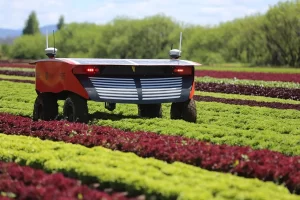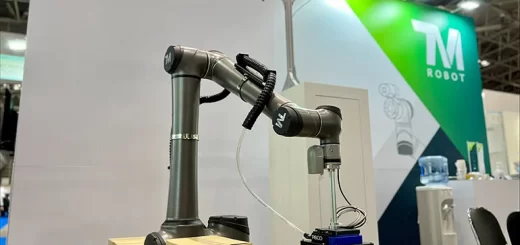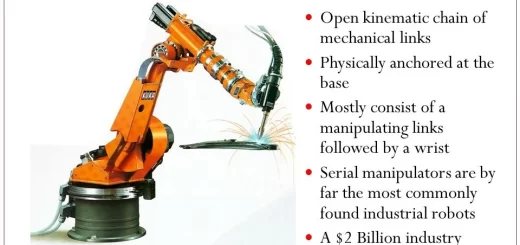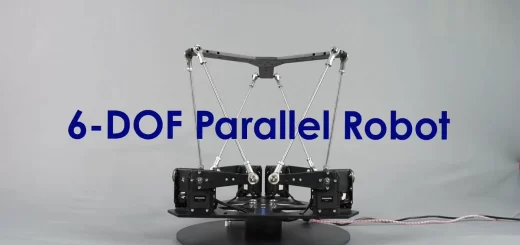Rippa robot features, advantages, disadvantages and what can Rippa robots do?
Rippa robot is an autonomous machine specifically designed for agricultural tasks, primarily for use in farming and horticulture. It is part of a broader trend of autonomous robots being developed to improve efficiency and reduce labor costs in agriculture.
Rippa robot
Rippa robot refers to a type of automated machine designed for specific tasks. the Rippa robot is a multi-functional, autonomous agricultural robot designed to perform a variety of tasks that were traditionally done manually, but with greater efficiency, precision, and sustainability. Rippa robots can reduce labor costs, increase efficiency, minimize chemical use, improve crop yields and collect valuable data.
Features of Rippa Robots
Rippa robot has a self-driving capability with advanced sensors and AI for environment recognition and navigation without human intervention. It is used in soil cultivation, planting, weeding, or harvesting on farms. It could be used for cleaning, inspection, material handling, or assembly tasks.
Rippa robot comes with LiDAR, cameras, and infrared sensors to perceive surroundings in real time and adapt to changing conditions. It has advanced Artificial Intelligence (AI) and Machine Learning (ML), It can learn from its environment to improve efficiency and make better decisions over time.
Rippa robot is likely to use electric motors powered by batteries, which are designed for long runtime and quick recharging. It has IoT (Internet of Things) integration for remote monitoring and control, or connection to a centralized system.
Rippa robot has a robust construction. It offers weather-resistant, to handle outdoor conditions, such as rain, heat, or dust, if used in agriculture or industrial settings. It has voice commands or touchscreen interfaces to make the robot easier to control, especially in non-technical settings.
What can Rippa robot do?
One of the primary functions of the Rippa robot is to automatically detect and remove weeds in fields. The robot can differentiate between crops and weeds using advanced vision systems (such as cameras, LiDAR, or infrared sensors) and AI algorithms. This allows it to selectively target and remove weeds without damaging the crops, reducing the need for herbicides and manual labor.
The Rippa robot may be equipped with tools to cultivate the soil, loosening it to prepare for planting or to aerate the soil for better root growth. This process can help improve soil health and reduce the need for human labor in preparing land for crops.
Rippa robots might be able to plant seeds with precision, placing them at the correct depth and spacing to optimize crop growth. This can lead to better yield predictions and more efficient use of resources like water and fertilizers.
In some cases, Rippa robots could also be integrated with an irrigation system to deliver water exactly where it is needed. Precision irrigation ensures minimal water waste, using sensors to detect soil moisture levels and delivering water precisely to the plants that need it.
Rippa robots can apply fertilizers or nutrients directly to the plants. The precision of these robots allows for a more controlled application of fertilizers, reducing the environmental impact and minimizing waste.
With advanced sensors and cameras, the Rippa robot can monitor crop health, using AI to detect early signs of diseases, pests, or nutrient deficiencies. The robot can gather valuable data, such as soil conditions, crop growth rates, and environmental factors, to help farmers make better, data-driven decisions.
Depending on the design, Rippa robots may be capable of harvesting certain crops. This is particularly useful for crops requiring delicate handling, as robots can be programmed to perform the task more precisely than human workers.
The Rippa robot uses GPS, LiDAR, or vision-based navigation systems to move around the field autonomously, without the need for a human operator. It can follow predefined paths, avoid obstacles, and adjust its movements in real time based on environmental conditions.
Many agricultural robots, including the Rippa, are equipped with remote monitoring systems that allow farmers to track the robot’s performance, status, and progress. This is typically done via a mobile app or web dashboard, which can be accessed from anywhere.
Using machine learning and AI algorithms, the Rippa robot can make real-time decisions based on the data it collects. It may choose to adjust its path to avoid areas of the field that are too wet to operate in or change the speed based on soil conditions.
What Can Rippa Robot Do for Farmers?
Rippa robots can reduce labor costs by automating tasks like weeding, planting, and harvesting, The robot reduces the reliance on human labor, which can be valuable in labor-scarce or expensive regions.
Rippa robots increase efficiency with autonomous navigation and precise execution of tasks, The Rippa robot can perform work faster and more efficiently than traditional manual labor, freeing up time for other tasks.
Rippa robots minimize chemical use. Since the robot can target specific weeds or apply fertilizers and pesticides more precisely, Rippa robots help to reduce the overall use of chemicals, making farming more sustainable and environmentally friendly.
Rippa robots improve crop yields, Through better soil management, precision planting, and real-time crop monitoring, Rippa robots can contribute to healthier crops and potentially higher yields.
Rippa robots collect valuable data, With integrated sensors and cameras, Rippa robots can gather important data about soil health, weather conditions, and crop performance, helping farmers optimize their practices and make data-driven decisions.
Advantages of the Rippa Robot
Automating repetitive or labor-intensive tasks increases productivity and reduces labor costs. Rippa robots can perform tasks like planting, weeding, or cleaning more precisely than humans, often resulting in better outcomes. Rippa robots can work continuously without needing breaks, contributing to round-the-clock productivity.
Although the initial investment might be high, over time, the cost savings from fewer human workers and better efficiency can outweigh this. Rippa robots reduce the need for humans to perform hazardous tasks, especially in dangerous environments like industrial settings or farms with heavy machinery.
Rippa robots are equipped with sensors and AI, the robot can gather and analyze data, leading to better decision-making, predictive maintenance, and overall system optimization. For agriculture robots, environmental sustainability can be achieved by minimizing resource use (e.g., water, fertilizers, etc.) through precision techniques.
Disadvantages of the Rippa Robot
Advanced robots, especially those using AI, sensors, and advanced hardware, can be expensive to purchase and set up. Regular maintenance may be required, especially if parts wear out, and there may be difficulties in finding qualified personnel to repair sophisticated machines.
The more automated and reliant a system becomes on robotics, the higher the risk of breakdowns or errors, leading to disruptions in operations. Most robots are designed for specific tasks. If a task changes, it may require reprogramming or replacement with a new robot designed for that purpose.
Rippa robots can lead to job losses in industries that were previously labor-intensive, particularly in fields like agriculture or manufacturing. Depending on the type of robot, setting it up might require specialized knowledge in programming, sensor calibration, or AI algorithms.
Concerns over privacy, data security, and the regulation of robotic systems are ongoing. Issues around liability in the event of a malfunction or accident are also important. For battery-operated robots, especially those doing long-duration tasks in remote areas, battery limitations can reduce productivity unless they are regularly charged or swapped.
While Rippa robots can save resources in some areas, the carbon footprint from manufacturing and disposing of robots can be considerable, especially if they use materials that are not easily recyclable.
You can follow Science Online on Youtube from this link: Science online
You can download Science Online application on Google Play from this link: Science Online Apps on Google Play
Agricultural robot advantages and disadvantages
Automatic milking or Robotic milking advantages and disadvantages
Applications of Artificial intelligence in agriculture, Agricultural robots, Drones, and Plantix app
Artificial Intelligence in Agriculture advantages, disadvantages and uses




